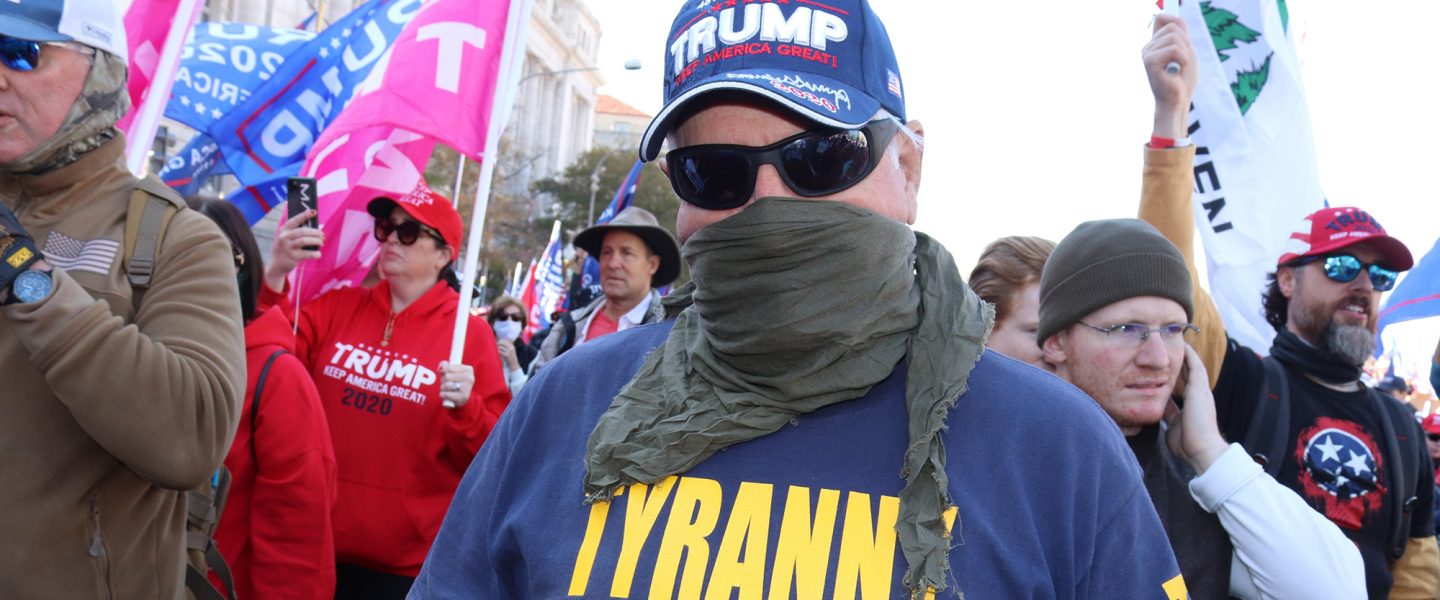Enthusiastic political supporters are great. But, especially on the right, this fervor too often turns into harassment, threats and violence.
|
Listen To This Story
|
Last week, we discussed the reasons for the enthusiasm gap that seems to exist between less engaged Democrats and very fervent Republican voters. Motivated by fear and believing they are engaged in an existential conflict, these fired-up conservatives are participating in the political process in any number of ways, from attending rallies to boycotting anything woke.
And, apart from their misguided motivation, there is nothing wrong with that. In fact, the system would benefit greatly if more Americans were better informed (which these folks aren’t) and more engaged (which they are).
However, there is a dark side to this cultishness that goes beyond buying racist country songs to own the libs.
Encouraged and emboldened by their leader Donald Trump and a well-oiled right-wing propaganda machine, this fervor is too often turning into something else.
Of course, the best example of this is the attack on the Capitol on January 6 when a violent mob was out for blood and sought to overturn the results of the 2020 election. More than 1,000 of them have already been convicted of crimes associated with this insurrection, while hundreds more are yet to follow.
And, if special counsel Jack Smith has his way, Trump could be one of them.
Sadly, this type of political violence is not limited to a single incident. Instead, it seems to be on the rise everywhere.
And it’s not just high-profile crimes like those committed by white nationalists, who are now considered to be the top domestic terrorism threat.
Harassment and the prospect of political violence are on the rise elsewhere. Threats against members of Congress are up fourfold since Trump took office. Earlier this year, Lee Zeldin, a New York Republican who served in Congress at the time, was attacked on stage at a political event, and an intruder broke into the home of then-Speaker Nancy Pelosi’s (D-CA) house and assaulted her husband with a hammer.
In addition, worried about the safety of its agents, the IRS recently announced that it would stop unannounced visits to taxpayers. The FBI said it was investigating an “unprecedented” number of threats against its agents after they searched Trump’s Mar-a-Lago residence for stolen documents.
Finally, voting rights activists are concerned that threats against election workers will leave polling places understaffed in the 2024 election.
The common thread in most of these cases is, of course, Trump. Apart from Zeldin, all of the above are frequent targets of his incendiary rhetoric, so it is not surprising that this has emboldened his base to “do something” about evil federal agencies and others by “taking action” or issuing threats.
And next thing you know, Congress is attacked.
Of course, the individual perpetrators are ultimately responsible for their actions, but Trump, other Republicans, and the right-wing media are at least partially to blame for what is happening.
Now, it is important to note in this context that this is not exclusively a right-wing problem. There are plenty of examples of extremists on the left who have resorted to violence or are sending out death threats.
However, in addition to this behavior seeming to be much more prevalent on the right, there is one major difference: Nobody lionizes the people on the left who are taking up arms.
When a gunman went on a shooting spree at the Republican practice ahead of the annual congressional baseball game, nobody praised him. The same when a man showed up outside Supreme Court Justice Brett Kavanaugh’s house with a gun earlier this year.
It’s a different story on the right, where even members of Congress hail those who attacked their place of work as “patriots” or “political prisoners.”
And it doesn’t help that Trump is suggesting that he will pardon the lot of them. The message is clear: Commit crimes on my behalf and I’ll let you off the hook.
Or take Kyle Rittenhouse, the young man who killed two people during a Black Lives Matter protest and has become a right-wing celebrity because of it.
It seems clear that the intimidation from the right is often tied to whoever Trump rails about or who is perceived to be a threat to him — the media, judges, prosecutors, election officials, Congress, etc. The former president does not explicitly tell his supporters to target these people, but that’s what often seems to happen, which results in a surge of harassment and threats.
There is nobody on the left doing anything comparable.
And make no mistake, just because a lot of this harassment is taking place online doesn’t make it any less real to the targets.
An emailed death threat is not much different from burning a cross in somebody’s front yard. Both are “nonviolent” forms of intimidation, and the white hood of yesteryear has been replaced by the anonymity the internet provides.
There is a real danger that this culture of intimidation devolves into something much worse; in some ways, it is surprising that it hasn’t already.
The last time the country was in this much turmoil, during the civil rights era, there were a string of targeted attacks, including those that claimed the lives of three of the most prominent figures on the left: John F. Kennedy, his brother Bobby, and Martin Luther King.
The country seems perilously close to returning to those times, and one such act of violence could trigger many others.
And, as WhoWhatWhy reported recently, nearly one-third of Americans believe Joe Biden’s reelection in 2024 would spark another insurrection along the lines of January 6.
It would be great if Trump and other right-wing agitators toned down their rhetoric, but that’s unlikely, since a turn toward civility would hurt their brand.
Instead, we’ll have to keep our fingers crossed — and trust that Americans will once more be swayed, in the words of Abraham Lincoln, by ”the better angels of our nature.”




